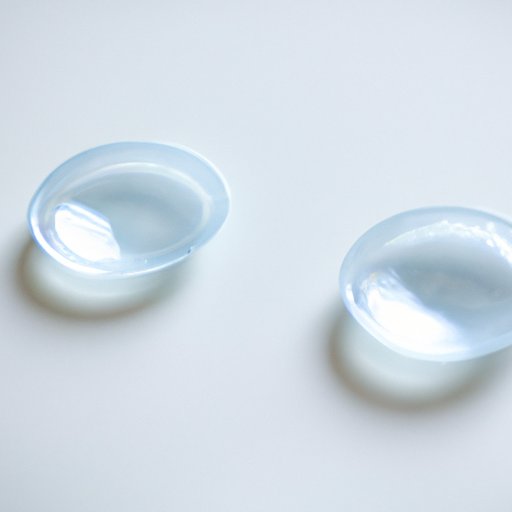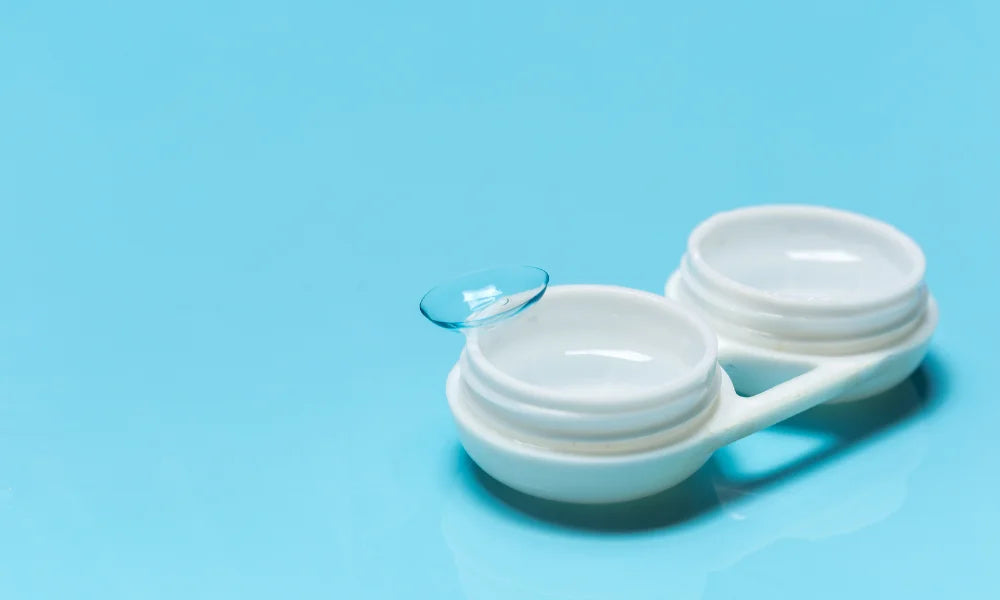Have you ever wondered if it's safe to take a nap while wearing your contact lenses? If so, you're not alone. Millions of contact lens wearers around the world have the same question. The idea of "can I take a nap in my contacts" often arises due to convenience or simply forgetting to remove them before resting. However, understanding the risks and best practices is crucial for maintaining eye health.
While contact lenses provide a comfortable and effective vision correction solution, they also come with specific care requirements. Sleeping or napping in contact lenses can lead to complications if not managed properly. This article will delve into the details of what happens when you nap with contacts, the potential risks, and how to ensure your eyes remain healthy.
Whether you're a seasoned contact lens user or just starting out, learning about the implications of napping in your lenses can help you make informed decisions. Let's explore the topic thoroughly so you can protect your vision and enjoy the benefits of contact lenses safely.
Read also:What Time Do The Phillies Play On Thursday Your Ultimate Guide To Catching The Game
Understanding Contact Lenses and Eye Health
Contact lenses are medical devices that sit directly on the cornea, allowing light to focus correctly for clear vision. They are available in various types, including daily disposables, monthly lenses, and extended-wear lenses. Each type has its own benefits and limitations, particularly when it comes to wearing them during sleep.
How Contact Lenses Affect Your Eyes
- Contact lenses reduce oxygen flow to the cornea, which is essential for maintaining eye health.
- Extended wear can lead to dryness, irritation, and even infections if not handled properly.
- Wearing lenses during sleep increases the risk of hypoxia, where the cornea doesn't receive enough oxygen.
Understanding these effects is the first step in determining whether it's safe to nap in your contacts. While some lenses are designed for overnight wear, it's important to know the differences between regular lenses and those approved for extended use.
Risks of Napping in Contact Lenses
Corneal Hypoxia
Corneal hypoxia occurs when the cornea doesn't receive enough oxygen, often due to prolonged contact lens wear. Napping in lenses, especially non-extended-wear varieties, can exacerbate this condition. Symptoms include redness, blurred vision, and discomfort.
Infections and Inflammation
Sleeping in contact lenses creates a conducive environment for bacteria and other pathogens to thrive. This can lead to infections such as keratitis, which is inflammation of the cornea. If left untreated, these infections can cause permanent damage to your eyes.
Dry Eyes and Discomfort
Contacts can dry out your eyes, especially during sleep when tear production decreases. This can lead to irritation, redness, and a gritty sensation upon waking. Dry eyes are not only uncomfortable but can also increase the risk of infections.
Types of Contact Lenses and Their Suitability for Sleep
Not all contact lenses are created equal. Some are designed specifically for extended wear, while others are meant to be removed daily. Here's a breakdown of the most common types:
Read also:Emagine Theater Saline Michigan Your Ultimate Movie Destination
Extended-Wear Contact Lenses
- These lenses are made from materials that allow more oxygen to reach the cornea, making them safer for overnight use.
- Examples include silicone hydrogel lenses, which are approved for up to 30 days of continuous wear.
Daily Wear Contact Lenses
- These lenses are not designed for overnight wear and should be removed before sleeping or napping.
- They are more affordable and widely available but require strict adherence to care guidelines.
Choosing the right type of contact lens is essential for ensuring comfort and safety, especially if you plan to nap with them.
Best Practices for Contact Lens Wearers
Whether you're taking a short nap or planning to sleep overnight, following these best practices can help protect your eyes:
Remove Lenses Before Napping
- Always remove your contact lenses before lying down, even for a short nap.
- Use clean hands and a proper contact lens solution when handling your lenses.
Clean and Store Lenses Properly
- Store your lenses in fresh solution every night to prevent contamination.
- Replace your lens case regularly to avoid buildup of bacteria.
By following these simple steps, you can reduce the risk of complications and maintain optimal eye health.
What Happens If You Nap in Contacts?
Napping in contact lenses, especially those not designed for extended wear, can lead to several issues:
Short-Term Effects
- Redness and irritation upon waking.
- Blurred vision due to dryness or lens movement.
Long-Term Effects
- Increased risk of corneal ulcers and infections.
- Potential for permanent damage to the cornea if issues are left untreated.
While occasional napping in contacts may not cause immediate harm, repeated instances can lead to serious complications. It's always best to err on the side of caution and remove your lenses before resting.
Can Extended-Wear Lenses Eliminate the Risk?
Extended-wear contact lenses are designed to be worn overnight, but they are not without risks. While they allow more oxygen to reach the cornea, they still require proper care and maintenance. Here are some key points to consider:
Advantages of Extended-Wear Lenses
- Convenience for people with busy lifestyles.
- Reduced need for daily removal and cleaning.
Potential Drawbacks
- Increased risk of infections if lenses are not cleaned regularly.
- Higher cost compared to daily wear lenses.
Even with extended-wear lenses, it's important to follow the recommended wear schedule and care guidelines to ensure safety.
Signs You Should Remove Your Contacts Before Napping
Not sure if you should remove your contacts before resting? Here are some signs that indicate it's time to take them out:
- Your eyes feel dry or irritated.
- You experience redness or discomfort.
- You've worn your lenses for an extended period without a break.
Listening to your body and addressing these symptoms promptly can help prevent more serious issues down the line.
Alternatives to Napping in Contacts
If you're concerned about the risks of napping in contact lenses, consider these alternatives:
Switch to Glasses
- Wearing glasses instead of contacts for short periods can give your eyes a much-needed break.
- Glasses are also a great option for people who spend long hours in front of screens.
Invest in Overnight Lenses
- If you frequently nap or sleep in your lenses, consider switching to extended-wear lenses.
- Consult your eye care professional to determine if this option is right for you.
By exploring these alternatives, you can find a solution that works best for your lifestyle and eye health needs.
Expert Tips for Safe Contact Lens Use
Here are some expert-recommended tips for ensuring safe and comfortable contact lens wear:
Regular Eye Exams
- Schedule annual eye exams to monitor your eye health and lens fit.
- Discuss any concerns or changes in vision with your eye care professional.
Follow Care Instructions
- Always follow the care instructions provided by your lens manufacturer.
- Never reuse or top off contact lens solution.
By prioritizing proper care and maintenance, you can enjoy the benefits of contact lenses while minimizing the risks.
Conclusion
In conclusion, the question "can I take a nap in my contacts" requires careful consideration of your lens type, eye health, and personal habits. While extended-wear lenses offer some flexibility, it's always best to remove your lenses before napping to reduce the risk of complications. By following best practices and consulting your eye care professional, you can enjoy clear vision and healthy eyes for years to come.
We encourage you to share this article with friends and family who wear contact lenses. Your feedback and questions are always welcome in the comments section below. For more information on eye care and contact lenses, explore our other articles and resources. Remember, taking care of your eyes is an investment in your long-term health and well-being.
Table of Contents
- Can I Take a Nap in My Contacts? A Comprehensive Guide to Resting with Contacts
- Understanding Contact Lenses and Eye Health
- How Contact Lenses Affect Your Eyes
- Risks of Napping in Contact Lenses
- Corneal Hypoxia
- Infections and Inflammation
- Dry Eyes and Discomfort
- Types of Contact Lenses and Their Suitability for Sleep
- Extended-Wear Contact Lenses
- Daily Wear Contact Lenses
- Best Practices for Contact Lens Wearers
- Remove Lenses Before Napping
- Clean and Store Lenses Properly



